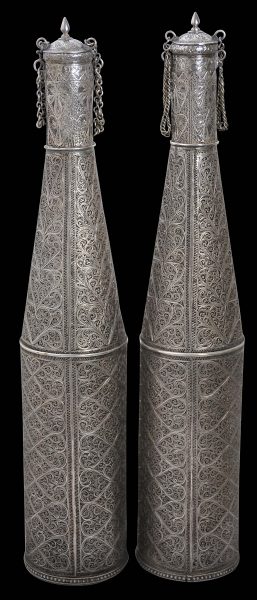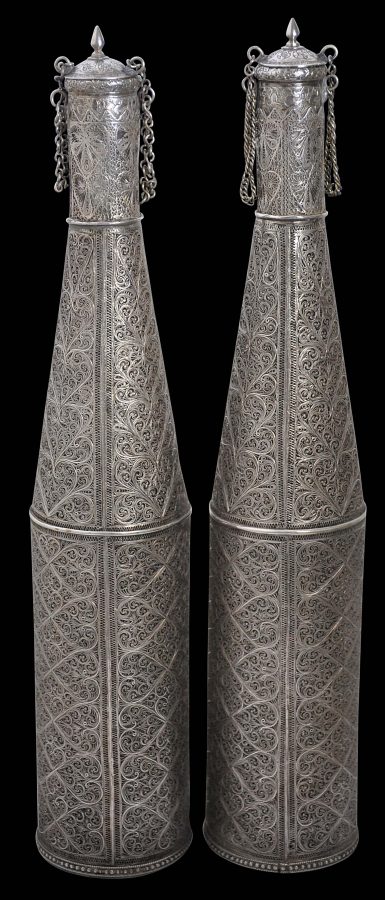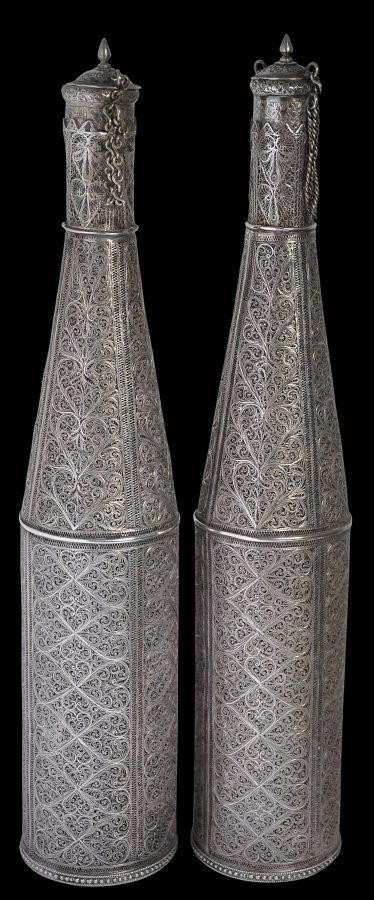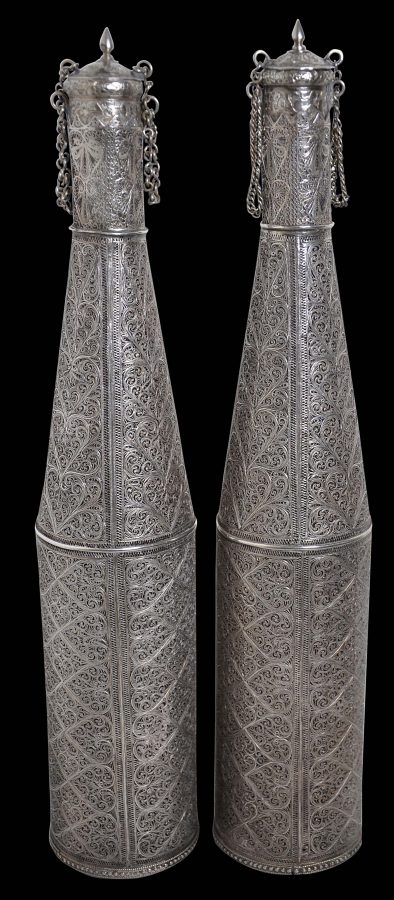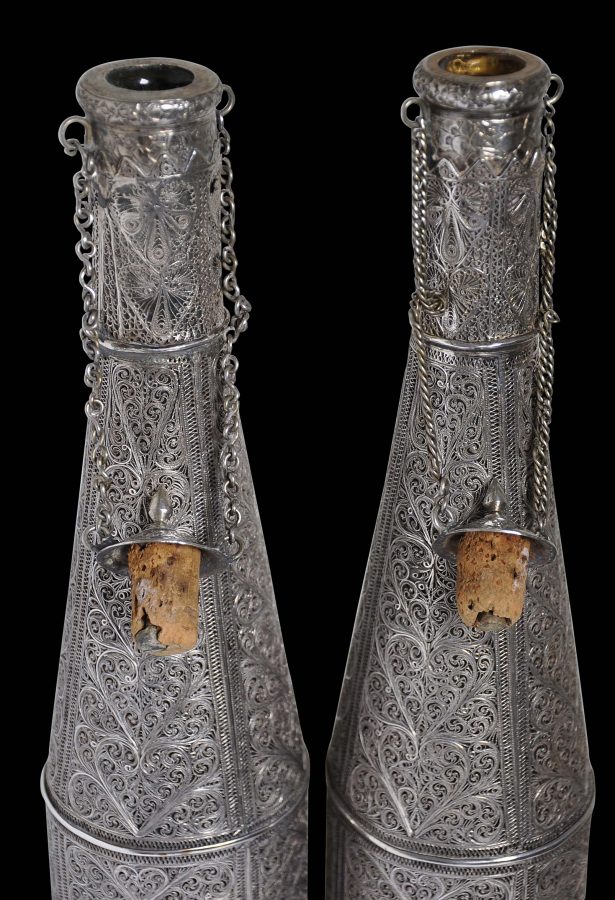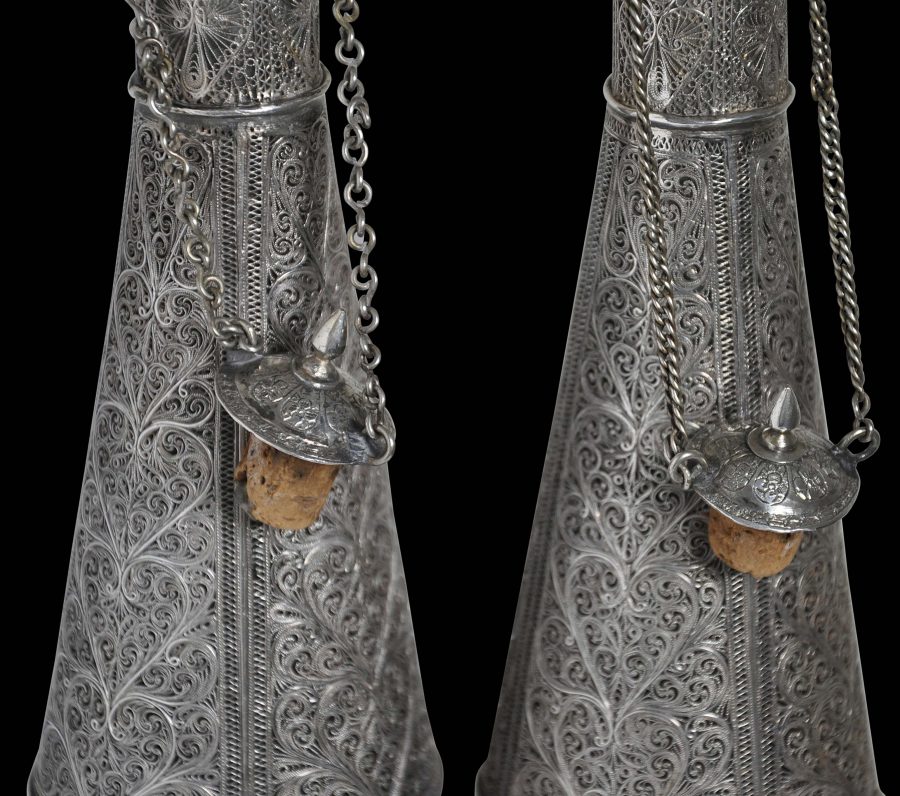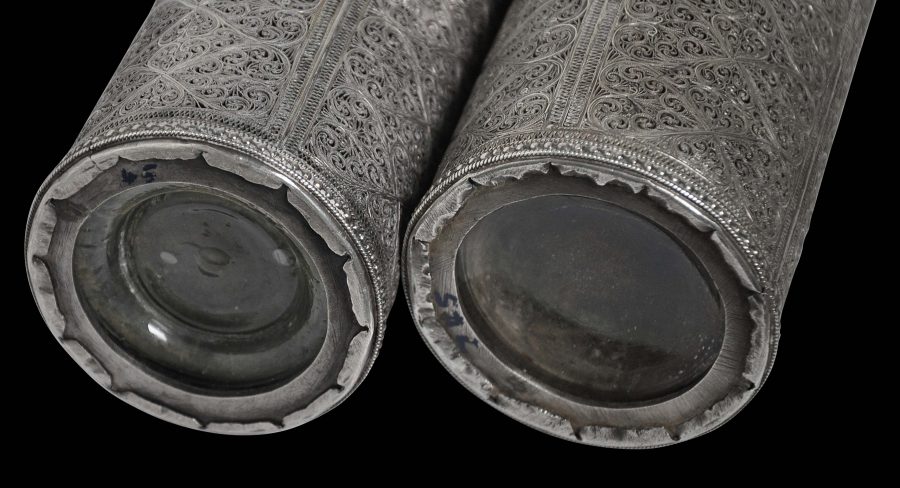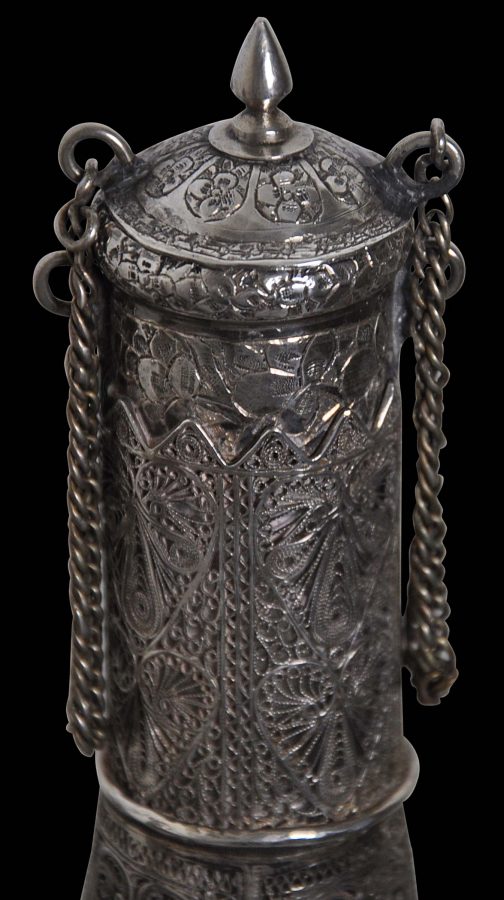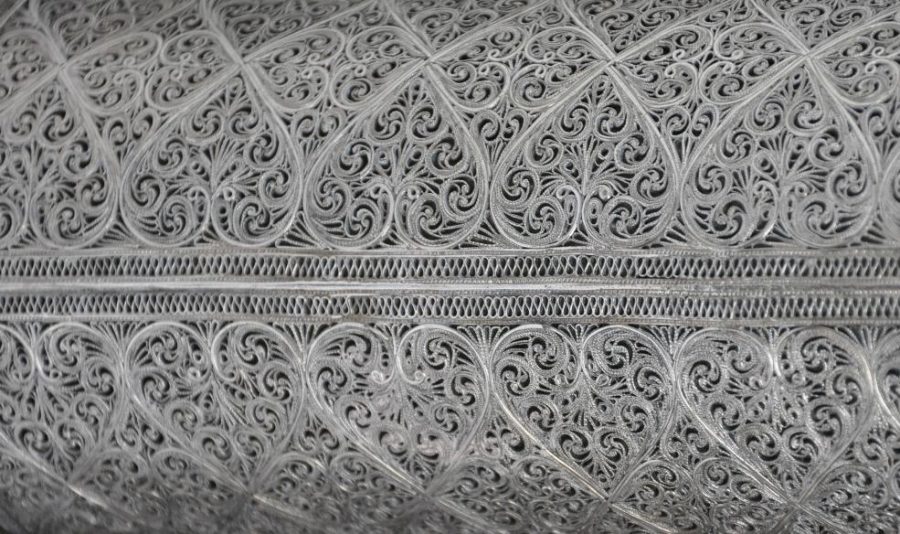This unusual pair of glass bottles is clad entirely in silver filigree. We have not seen anything quite like these before and probably, they are a one-off commission. Tall, conical and covered in fine filigree, the two as a pair, are particularly striking.
The silver cladding follows the shape of the bottles, although it is fixed over the bottles and cannot be removed. The bottles themselves are of clear glass, the glass only being visible from the bases, and are unusual in shape in that they do not have a shoulder or a neck but simply narrow to an opening. The glass looks relatively early in that small bubbles are present, suggesting a 19th century dating for the glass bottles themselves.
Both are fitted with cork stoppers that are topped with chased silver coverings and these are attached to the bottles with silver chains.
The filigree work probably is Indian and is in the style of 19th century Karimnagar filigree.
The filigree is composed of a combination of wide flattened bands of silver wire in-filled with fine twisted silver wire work.
The combination of wide, flattened wire components with fine twisted filigree work is found on articles often ascribed to Goa of the second half of the seventeenth century – see Menshikova (2006, p. 43). The author also refers to filigree items of this type as having been made by ‘Chinese masters in India or Southeast Asia’ in the seventeenth century, which leaves open the possibility that such items might have been made in Batavia perhaps, and most probably traded by the Dutch East India Company (VOC). But the silver filigree here is later and probably of Indian origin. Perhaps it is not unlike several examples at Burghley House in Lincolnshire, see here for those.
The filigree on both bottles is remarkably well preserved. One has minor loss to the filigree close to the mouth and stopper but this is relatively trivial for a pair that is quite possibly unique. There are no maker’s, assay or import marks.
References
Jordan, A. et al, The Heritage of Rauluchantim, Museu de Sao Roque, 1996.
Piotrovsky, M. et al, Silver: Wonders from the East – Filigree of the Tsars, Lund Humphries/Hermitage Amsterdam, 2006.


